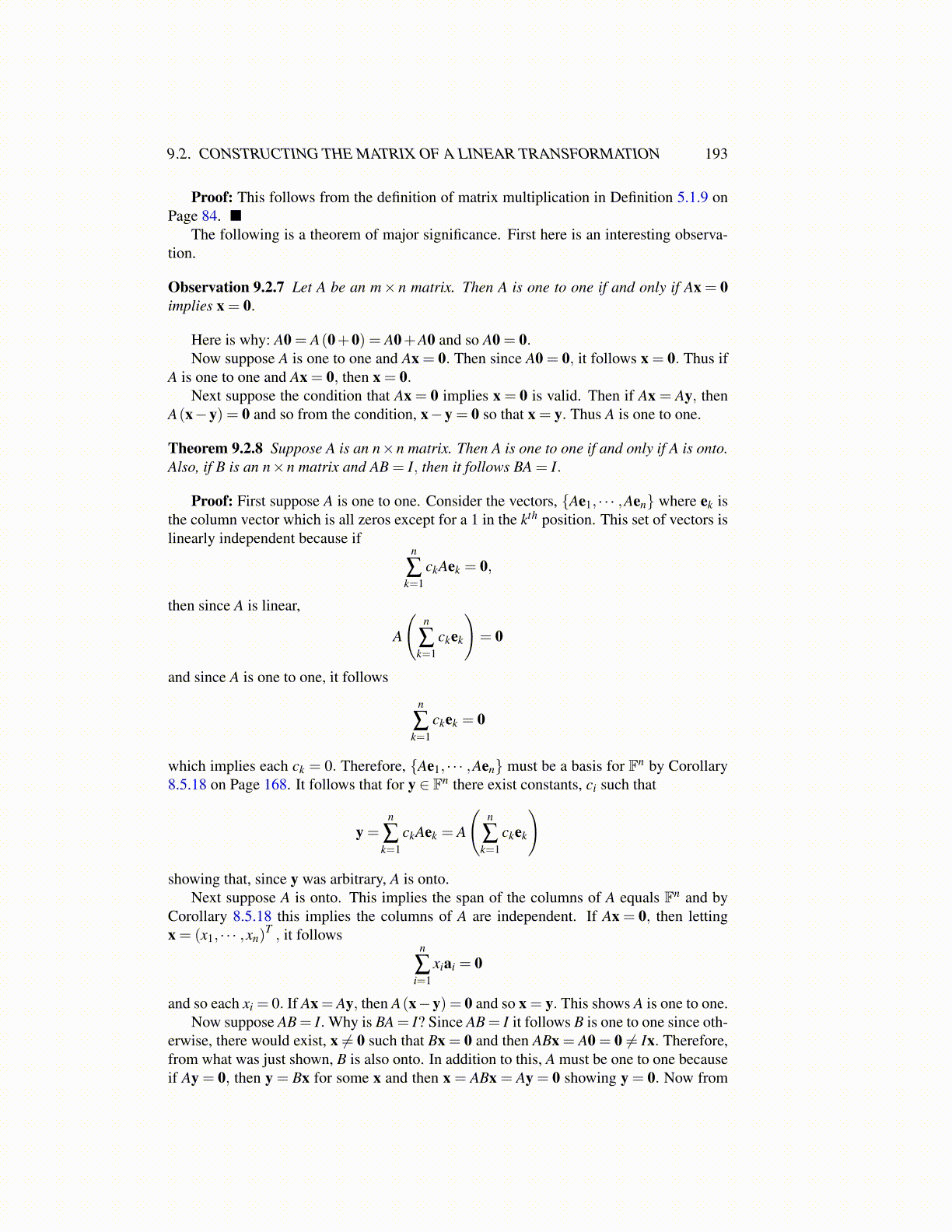
9.2. CONSTRUCTING THE MATRIX OF A LINEAR TRANSFORMATION 193
Proof: This follows from the definition of matrix multiplication in Definition 5.1.9 onPage 84. ■
The following is a theorem of major significance. First here is an interesting observa-tion.
Observation 9.2.7 Let A be an m× n matrix. Then A is one to one if and only if Ax = 0implies x = 0.
Here is why: A0 = A(0+0) = A0+A0 and so A0 = 0.Now suppose A is one to one and Ax = 0. Then since A0 = 0, it follows x = 0. Thus if
A is one to one and Ax = 0, then x = 0.Next suppose the condition that Ax = 0 implies x = 0 is valid. Then if Ax = Ay, then
A(x−y) = 0 and so from the condition, x−y = 0 so that x = y. Thus A is one to one.
Theorem 9.2.8 Suppose A is an n×n matrix. Then A is one to one if and only if A is onto.Also, if B is an n×n matrix and AB = I, then it follows BA = I.
Proof: First suppose A is one to one. Consider the vectors, {Ae1, · · · ,Aen} where ek isthe column vector which is all zeros except for a 1 in the kth position. This set of vectors islinearly independent because if
n
∑k=1
ckAek = 0,
then since A is linear,
A
(n
∑k=1
ckek
)= 0
and since A is one to one, it follows
n
∑k=1
ckek = 0
which implies each ck = 0. Therefore, {Ae1, · · · ,Aen} must be a basis for Fn by Corollary8.5.18 on Page 168. It follows that for y ∈ Fn there exist constants, ci such that
y =n
∑k=1
ckAek = A
(n
∑k=1
ckek
)
showing that, since y was arbitrary, A is onto.Next suppose A is onto. This implies the span of the columns of A equals Fn and by
Corollary 8.5.18 this implies the columns of A are independent. If Ax = 0, then lettingx = (x1, · · · ,xn)
T , it followsn
∑i=1
xiai = 0
and so each xi = 0. If Ax = Ay, then A(x−y) = 0 and so x = y. This shows A is one to one.Now suppose AB = I. Why is BA = I? Since AB = I it follows B is one to one since oth-
erwise, there would exist, x ̸= 0 such that Bx = 0 and then ABx = A0 = 0 ̸= Ix. Therefore,from what was just shown, B is also onto. In addition to this, A must be one to one becauseif Ay = 0, then y = Bx for some x and then x = ABx = Ay = 0 showing y = 0. Now from